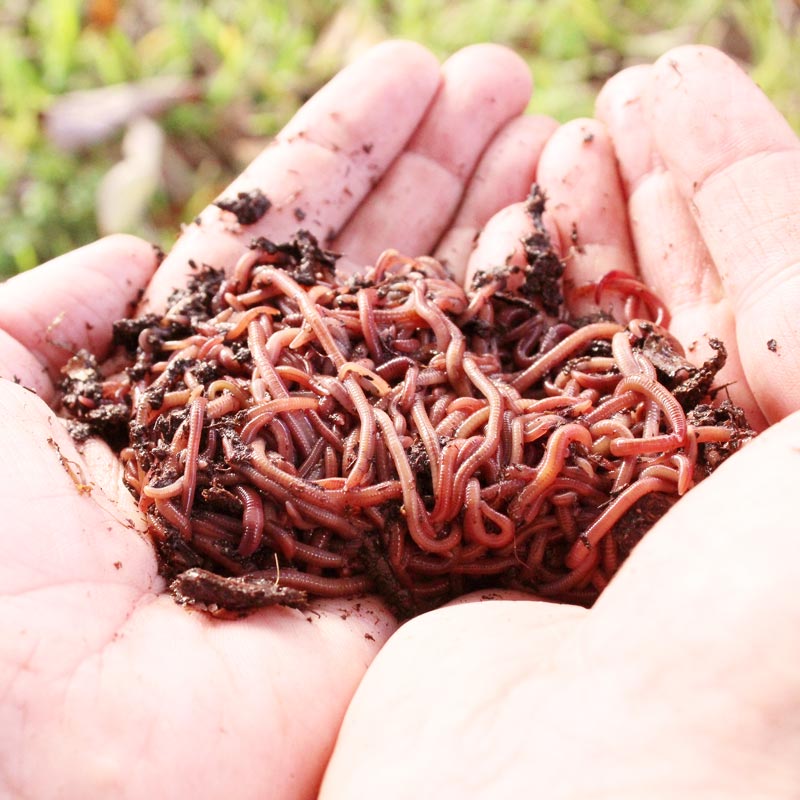Use Lake Hickory Bait for Amazing Lawn Health and Gorgeous Greens
Use Lake Hickory Bait for Amazing Lawn Health and Gorgeous Greens
Blog Article
Red Wigglers: The Unsung Heroes of Organic Waste Recycling
Red wigglers, or Eisenia fetida, serve as vital agents in the organic waste reusing procedure, transforming discarded products right into valuable vermicompost. As the world increasingly looks for services to fight waste buildup and boost agricultural productivity, recognizing the function of these worms ends up being important.
What Are Red Wigglers?
The amazing strength of red wigglers, medically referred to as Eisenia fetida, emphasizes their vital function in natural waste recycling. These small, reddish-brown earthworms are typically located in disintegrating organic issue, such as compost heap and manure lots. Lake Hickory Bait. Unlike other earthworm varieties, red wigglers prosper in nutrient-rich atmospheres and are highly effective at breaking down organic products, making them essential for vermicomposting

(Lake Hickory Bait)In enhancement to their role in waste reduction, red wigglers add to soil wellness by boosting dirt structure and aeration via their burrowing activities (Lake Hickory Bait). Their existence in composting systems not only boosts decay rates however additionally advertises a lasting approach to lose monitoring, highlighting their importance in eco-friendly conservation efforts
Benefits of Composting With Worms
Composting with worms, particularly red wigglers, provides various benefits that improve both waste monitoring and dirt wellness. These worms effectively damage down natural waste, transforming it right into nutrient-rich vermicompost that enriches dirt. This procedure speeds up decomposition, permitting a faster recycling of kitchen scraps and other organic materials compared to conventional composting methods.
Additionally, the vermicompost created by red wigglers is bristling with advantageous microorganisms, which help boost dirt structure, oygenation, and dampness retention. This improves the overall wellness of plants, advertising energetic growth and enhanced yields in yards and agricultural settings. Furthermore, making use of worms in composting decreases the manufacturing of greenhouse gases, such as methane, adding to an extra sustainable waste management system.

Just How to Start Vermicomposting
Developing a vermicomposting system is a simple procedure that can generate substantial benefits for both waste management and dirt enrichment. To start, pick an ideal container, such as a plastic bin or wooden box, with adequate ventilation holes to guarantee appropriate air flow. The measurements should ideally be around 2 feet by 3 feet, allowing sufficient space for the worms to flourish.
Next, prepare bed linen material, which can include shredded newspaper, cardboard, or coconut coir. This bed linens needs to be dampened to produce an appropriate habitat for the worms. As soon as the bed linen remains in location, introduce red wigglers (Eisenia fetida) right into the container, typically around one extra pound of worms for each square foot of surface.
Following the positioning of worms, include organic waste, such as fruit and veggie scraps, coffee grounds, and crushed eggshells. With these actions, you will properly start a vermicomposting system that contributes to lasting waste management and improves your soil.
Preserving a Healthy And Balanced Worm Bin
(Lake Hickory Bait)Maintaining a worm bin prospering needs regular interest and like make sure the health of the red wigglers and the performance of the composting process. Correct maintenance starts with keeping track of the dampness degrees; the container ought to perspire but not saturated. A great general rule is to keep a consistency similar to a wrung-out sponge.
Delicately mixing the bedding and food scraps every few weeks protects against compaction and makes helpful site certain that all worms have accessibility to oxygen. In addition, it is important to feed the worms properly.
If the container ends up being as well hot or chilly, the worms might become stressed out. By vigilantly managing these factors, one can keep a durable and productive worm container.
Effect On Lasting Living
The effective upkeep of a worm bin not just benefits the health of red wigglers yet additionally contributes significantly to sustainable living techniques. By reusing organic waste, such as kitchen scraps and backyard debris, red wigglers aid draw away substantial quantities of material from garbage dumps. This reduction in waste not just reduces greenhouse gas emissions yet additionally decreases the environmental burden linked with waste administration.
Additionally, the castings produced by red wigglers offer as a nutrient-rich organic plant food, improving soil wellness and advertising plant growth. This all-natural alternative to chemical plant foods sustains lasting agriculture and horticulture practices, lowering reliance on artificial inputs that can hurt environments. Additionally, worm composting promotes awareness of waste administration, encouraging people and communities to take on more lasting behaviors.

Final Thought
In recap, red wigglers offer as essential factors to organic waste reusing via their reliable disintegration of natural products. Their ability to create nutrient-rich vermicompost boosts dirt wellness and sustains lasting farming techniques. By incorporating vermicomposting right into waste monitoring approaches, people and neighborhoods can significantly decrease waste while promoting ecological sustainability. The role of Eisenia fetida in promoting healthy environments highlights the importance of these microorganisms in achieving sustainable living and improving soil fertility.
Report this page